
10 garden path ideas

A well-designed garden path does more than guide footsteps. It enhances the landscape, adds charm, and creates a sense of journey through lush greenery.
The right path design can make a backyard feel inviting and harmonious, blending functionality with natural beauty.
Stone, gravel, brick, or stepping stones offer unique ways to craft a picturesque walkway. Curved paths bring a soft, organic feel, while straight lines add structure and elegance.
Adding flowers, lights, or decorative edges can further enhance the visual appeal. A thoughtfully placed path can highlight key areas like flower beds, seating spaces, or water features.
Whether the goal is rustic charm, modern simplicity, or cottage-style whimsy, the right design turns an ordinary garden into a serene retreat.
These ten ideas inspire creativity and bring life to any outdoor space, making every step a delightful experience.
10 Garden Path Ideas to Enhance Your Outdoor Space
A beautiful garden path adds character to any outdoor space. It connects different areas, provides structure, and enhances the overall design.
The right path can make a backyard feel like a peaceful retreat or a well-organized landscape. Here are ten inspiring ideas to help design a perfect garden walkway.
1. Classic Stone Path
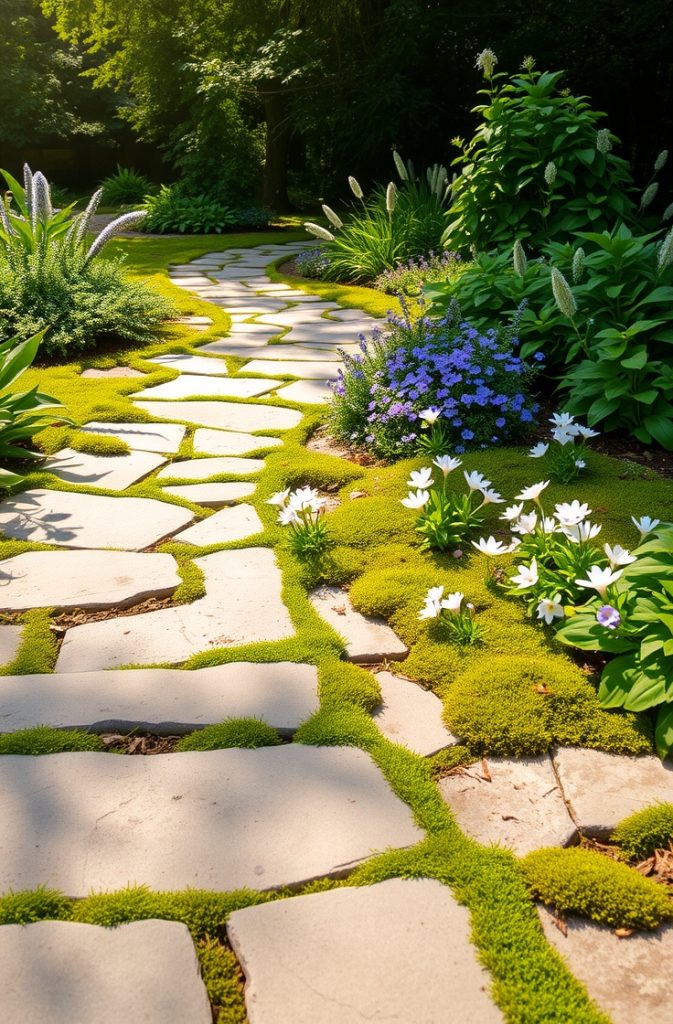
Natural stone brings a timeless appeal to garden paths. Large, flat stones placed on compacted soil or gravel create a rustic yet elegant walkway.
Choosing irregularly shaped stones adds a natural flow, while uniform cuts offer a more polished look. Edging the path with plants or small pebbles enhances the beauty.
2. Brick Pathway Charm
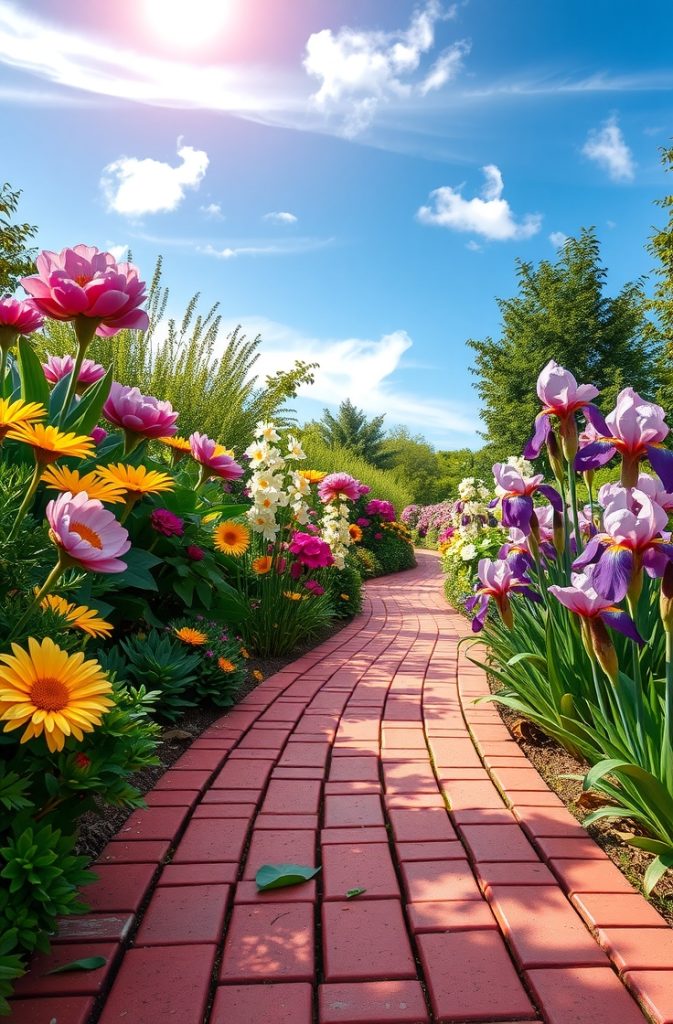
Bricks create a warm, inviting walkway. Arranging them in herringbone, basketweave, or running bond patterns adds visual interest.
Over time, moss and grass may grow between the bricks, giving the path an aged, cottage-style charm. Sealing the bricks helps maintain their durability and color.
3. Gravel Simplicity
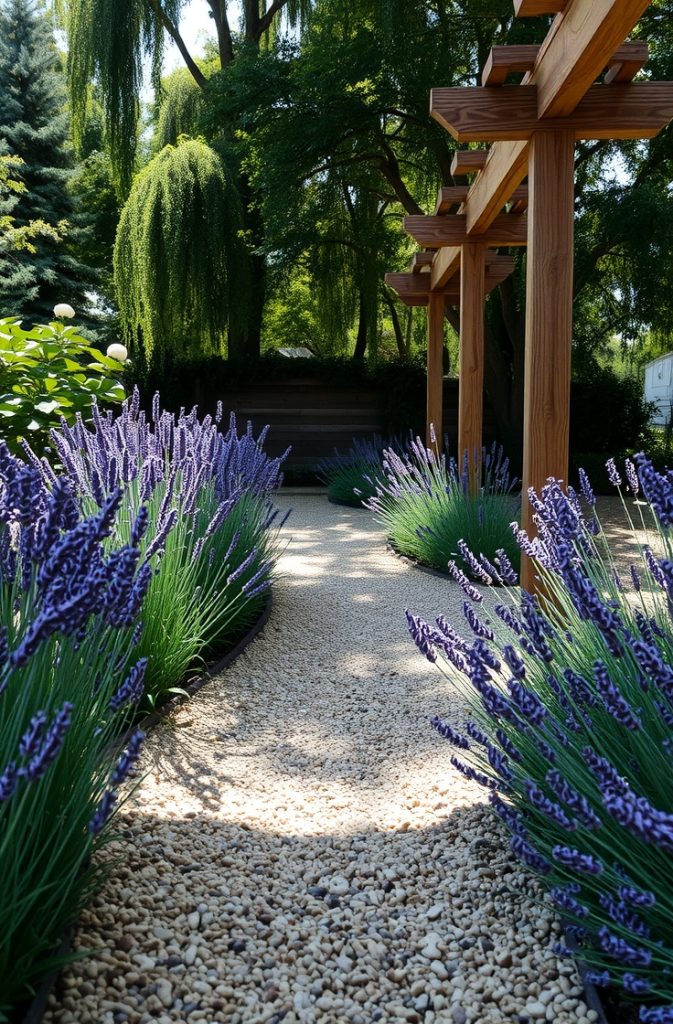
Gravel paths offer an affordable and easy-to-maintain solution. They work well in modern, minimalist, or cottage-style gardens.
Lining the edges with bricks, wooden beams, or stone prevents gravel from spreading. Combining different gravel colors adds texture and depth.
4. Stepping Stone Pathway
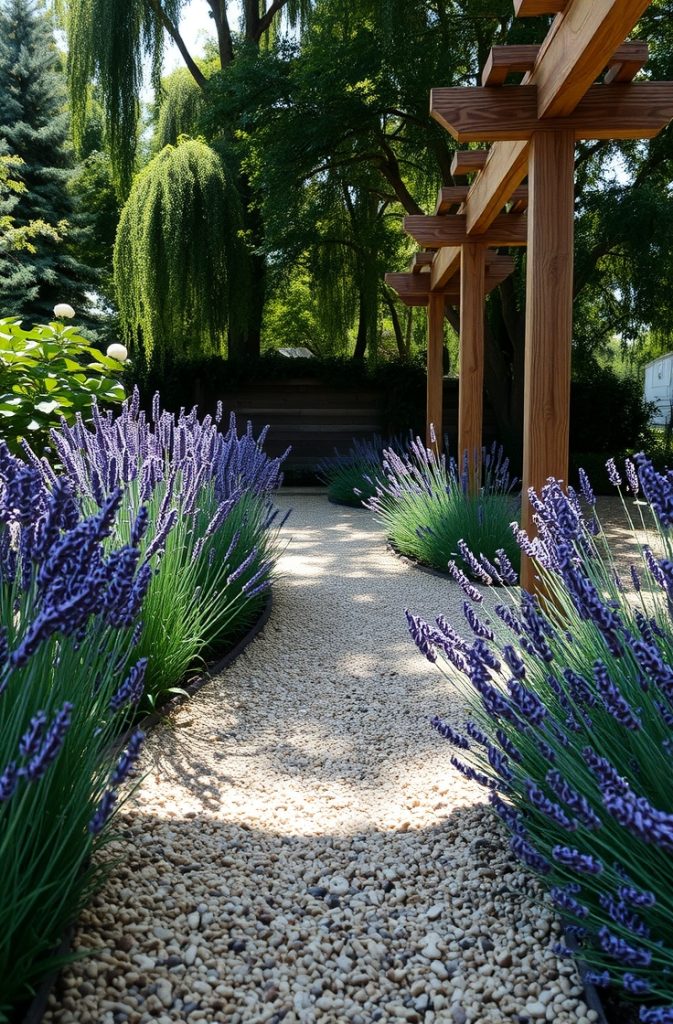
Large stepping stones set in grass or gravel create a playful and natural look. Spacing them evenly allows for comfortable walking.
Adding surrounding ground cover plants like creeping thyme softens the edges. Stepping stones work well in both structured and wild gardens.
5. Wooden Boardwalk

A wooden pathway blends seamlessly into garden landscapes. Raised wooden planks work well in damp areas, preventing water pooling.
Treated or weather-resistant wood like cedar or teak ensures longevity. This type of path pairs beautifully with ferns, bamboo, and water features.
6. Mosaic Tile Path
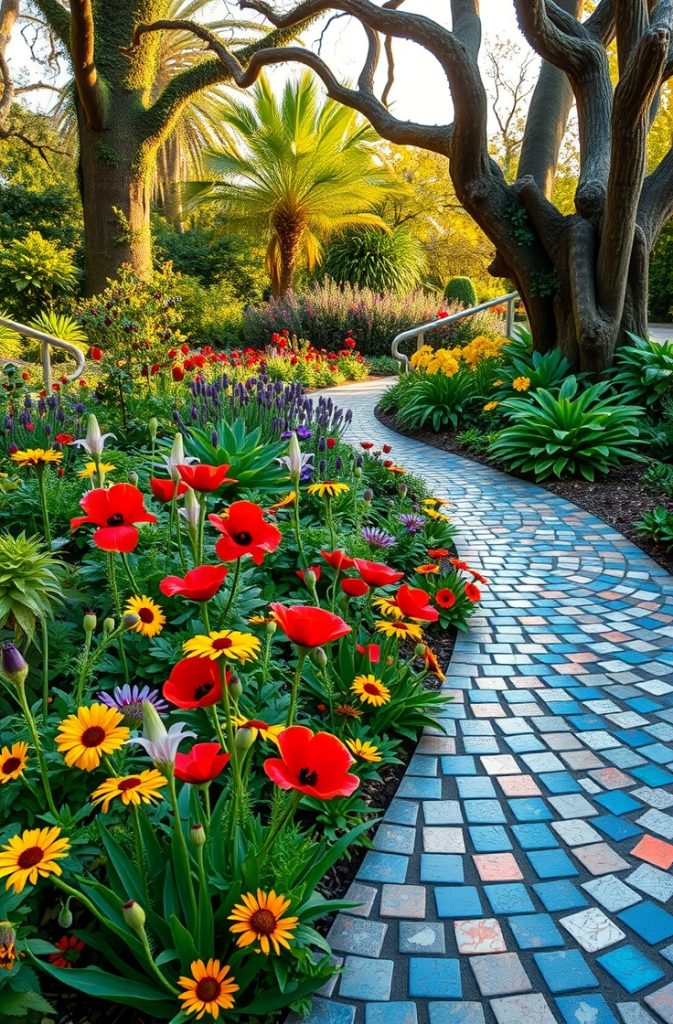
Colorful tiles arranged in intricate patterns bring a vibrant touch to a garden path. Using broken ceramics or pre-made mosaic tiles adds artistic flair.
A Mediterranean or bohemian-style garden benefits greatly from this decorative approach. Proper sealing keeps tiles intact against weather conditions.
7. Cobblestone Walkway
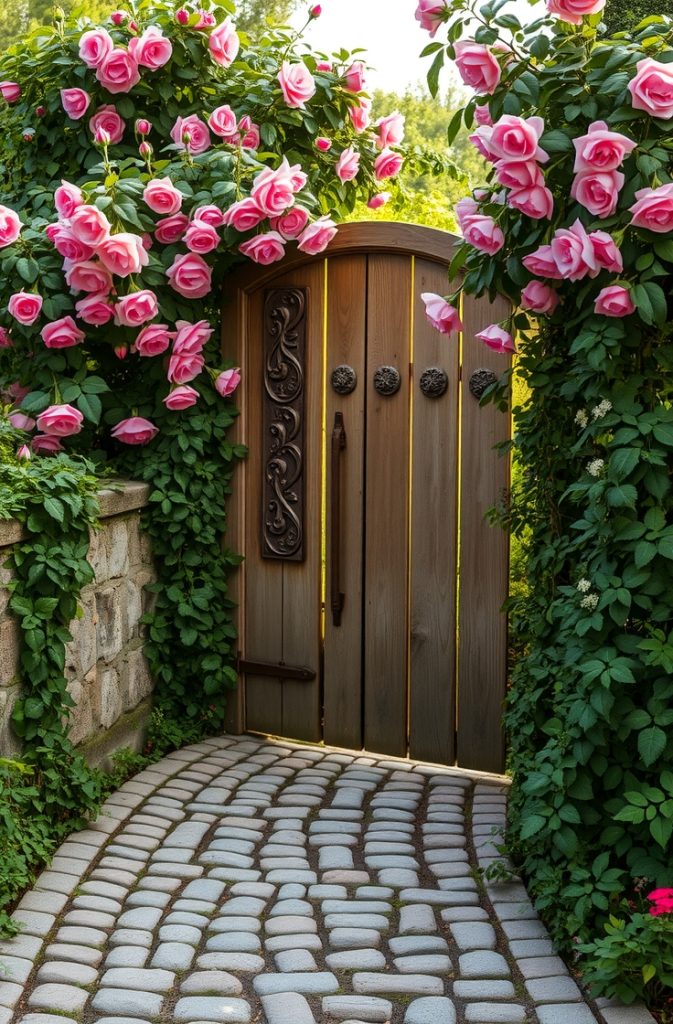
Cobblestones provide a historic, European-style charm. Their textured surface creates a visually appealing, old-world feel.
Pairing cobblestones with climbing vines, antique lanterns, or wooden benches completes the vintage look. Regular maintenance prevents weeds from growing between the stones.
8. Mulch Path for a Natural Look
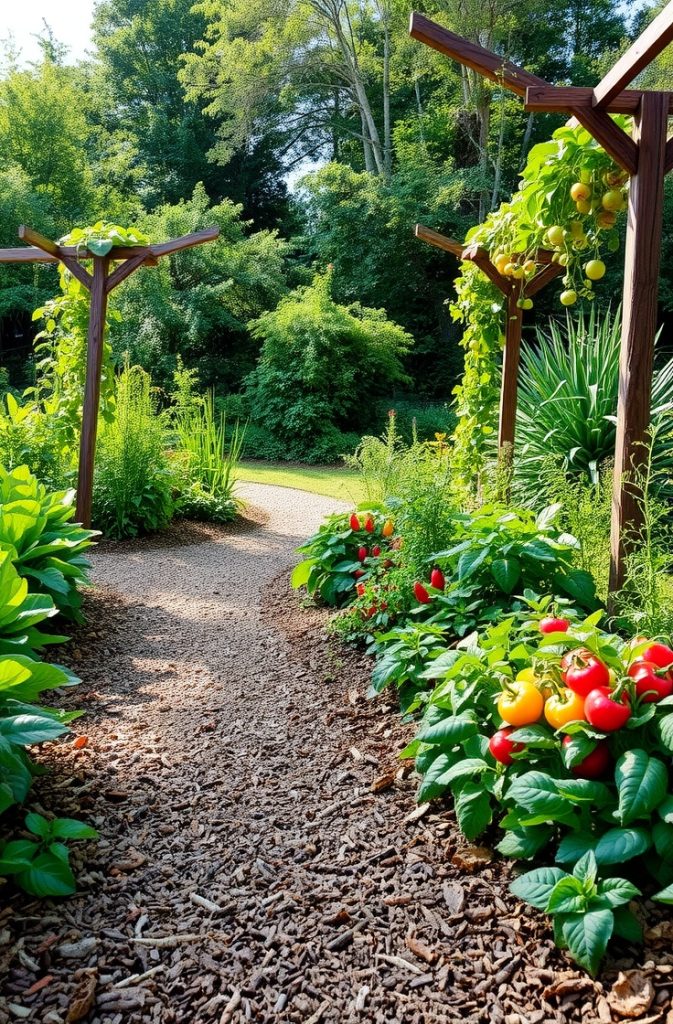
Mulch paths blend effortlessly into gardens. They work well in woodland settings or vegetable gardens.
Organic mulch like bark or wood chips is cost-effective and provides a soft walking surface. Refreshing the mulch occasionally keeps the path looking clean and tidy.
9. Japanese-Inspired Zen Path
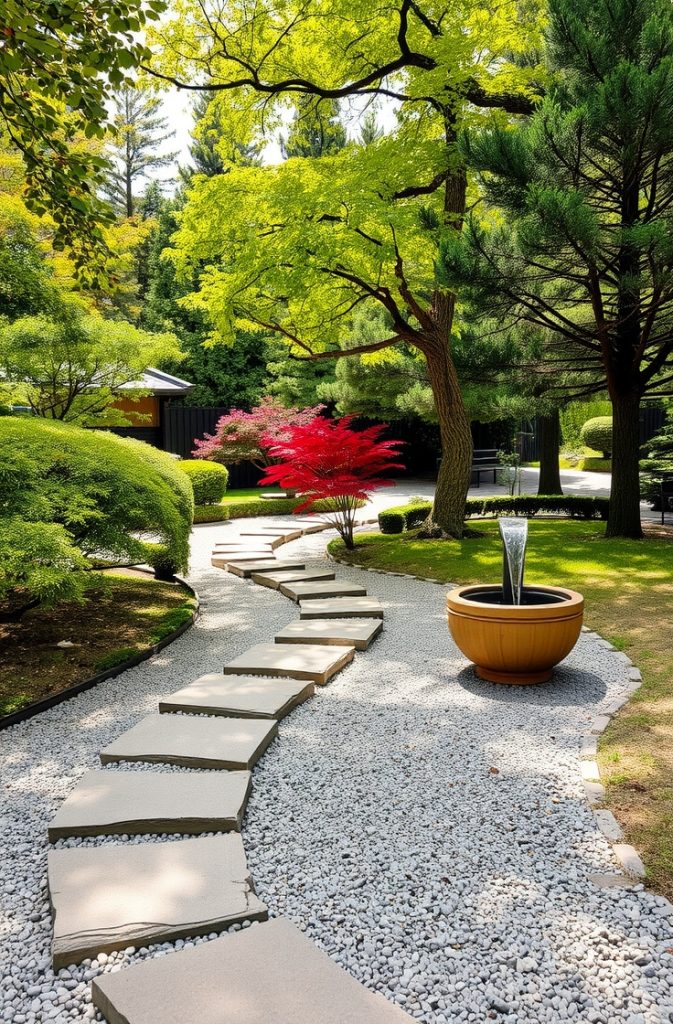
A Zen garden path uses gravel, stepping stones, and minimalist design elements. Large rocks, bamboo, and small water features enhance the tranquil atmosphere.
Simple patterns raked into the gravel add meditative beauty. Dark gray or white gravel pairs well with this style.
10. Winding Flower-Lined Path

A curving path lined with flowers creates a fairytale-like atmosphere. Planting fragrant blooms like lavender, jasmine, or roses along the edges enhances the sensory experience.
A winding design leads visitors through the garden, making each turn a delightful discovery.
FAQs
What is the most durable material for a garden path?
Natural stone and brick offer long-lasting durability. These materials withstand weather changes and require minimal maintenance.
How wide should a garden path be?
A comfortable walking path should be at least 2 to 3 feet wide. Wider paths work well for high-traffic areas or two-person walkways.
What is the easiest garden path to install?
Gravel paths are easy to install and require minimal effort. Laying down a weed barrier and edging helps keep gravel contained.
How can I make a garden path more inviting?
Adding flowers, lanterns, or decorative borders enhances the appeal. Curved paths create a more natural and welcoming feel.
Which garden path works best in small spaces?
Stepping stones or narrow brick paths fit well in compact gardens. A winding layout makes the space feel larger and more dynamic.
Conclusion
A well-designed garden path enhances the beauty and functionality of outdoor spaces. Stone, brick, gravel, or wood each offer unique styles that complement different landscapes.
Selecting the right materials and layout transforms a simple walkway into a stunning focal point. These ten ideas inspire creative designs that bring charm and character to any garden.
